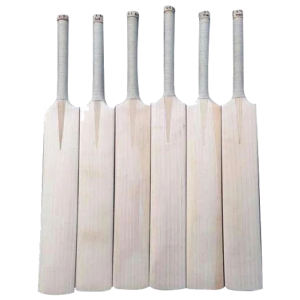The Story Of English Willow Cricket Bat

Introduction
One piece of cricket equipment during the game, which becomes altogether indispensable, is the cricket bat made from the main material for manufacturing: English willow. It speaks of exclusiveness, skillful craftsmanship, and a strong association with the history of the game. Proof of the difficult and laborious job that took a mere piece of wood and changed it into an appealing masterpiece was actually where the bat truly began. This story of individuality shows what has made the English willow cricket bat so popular with players cross the world.
The Origins of the English Willow
England-grown English willow is the main material used to make cricket bats. This custom dates back to the 18th century, a time when cricket became a popular game and moved from being a country activity. Before overarm bowling, bats were similar to hockey sticks, but with a broader blade and a more pronounced handle. In cricket, English willow’s light weight and strength combine to offer maximum force and control. For more than 200 years, it has been used exclusively to make cricket bats due to its inherent durability.
Growing English Willow
English willow cricket bats are manufactured after 15 to 20 years of careful cultivation and maintenance of the willow plants. These trees are grown on well-drained soil to prevent water logging, and they are pruned so that they grow straight trunks with less number of knots and branches. Once they reach adulthood, the logs will be split into clefts and the trees are hacked down to provide the bats raw, rectangular wood. The process starts much before the shape of the bat, outlining the skill and knowledge required for the growth of willow.
Manufacture Process: From Tree to Bat
The seasoning process that willow clefts go through naturally reduces the moisture content of the wood, making it simpler to work with and extending its life. This is a multi-month process that is essential to produce high-quality bats. Clefts are rated for quality after seasoning; Grade 1 bats have a straight, clear grain and little flaws. Junior and amateur players use the lower grades. Pressing improves the wads’ toughness and boosts the bat’s power and performance. In order to guarantee performance and longevity, a delicate balance between give and power is struck throughout the pressing process.
Shaping the Bat: Craftsmanship and Precision
Carefully sculpting the handle, shoulders, spine, and sweet spot of a willow cricket bat is necessary to achieve optimal balance, pick-up, and power. After that, the bat is hand-finished to guarantee that its shape and profile are ideal for the player. Usually constructed of cane, the handle is strengthened with twine binding. For secure grip, a rubber grip is installed. The blade has a coating for durability and is sanded and polished. Because every bat is different, the player and the bat develop a special bond.
The End Product: A Legacy of Excellence
Conclusion
The England willow cricket bat tells of traditional values, craft, and lasting superiority.
From the caring plantation of willow to the skilful hands of those legendary bat makers—it must be, being infused with a respect for the game and history. The English willow bat is not just a piece of equipment; it is a symbol of the game itself, embodying the spirit of cricket and the pursuit of perfection on the field. The English willow bat is the symbol that best conveys, to a player and follower of the sport, exactly why one loves this game, and the justification for the assiduous quest for excellence.
